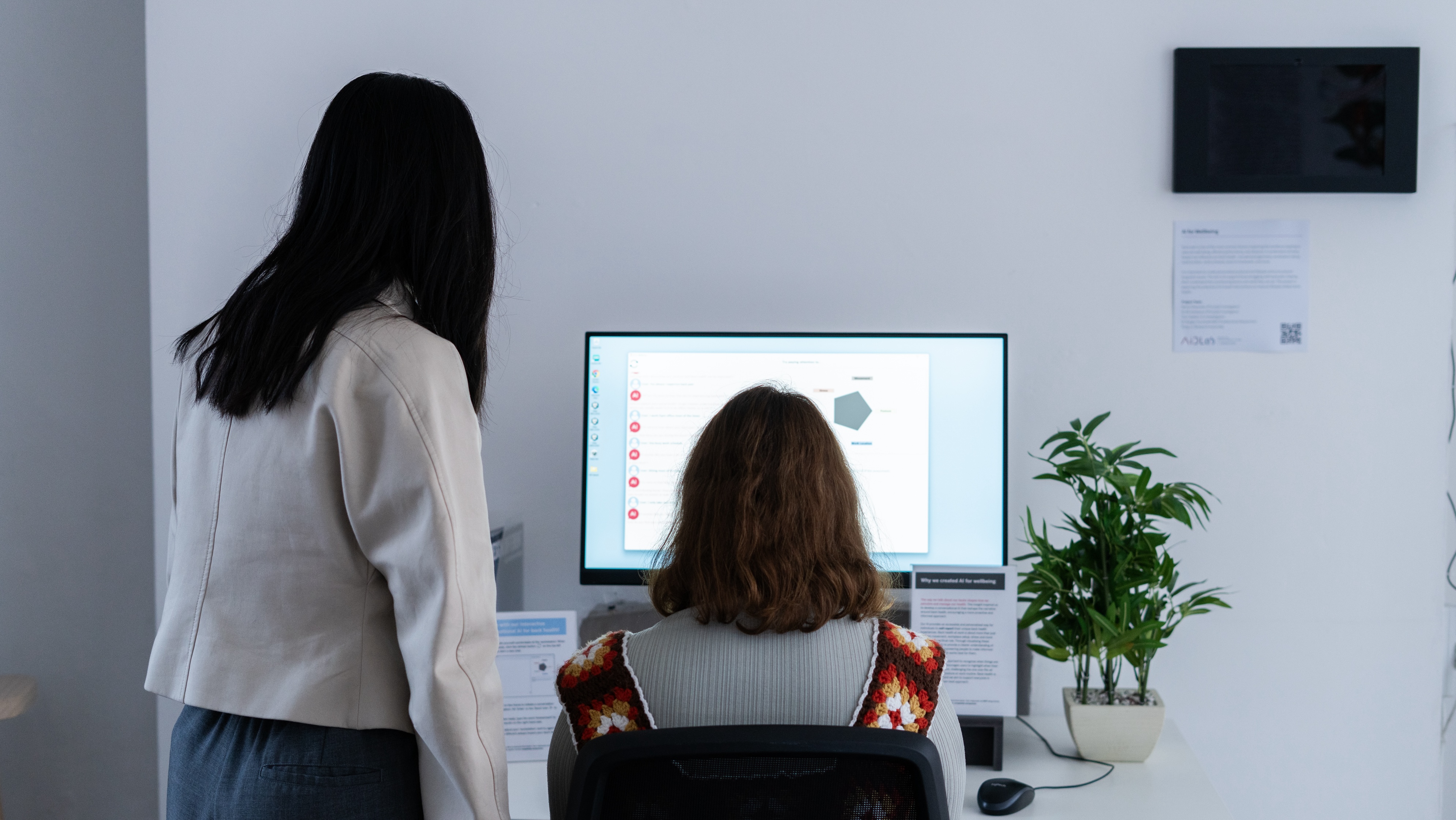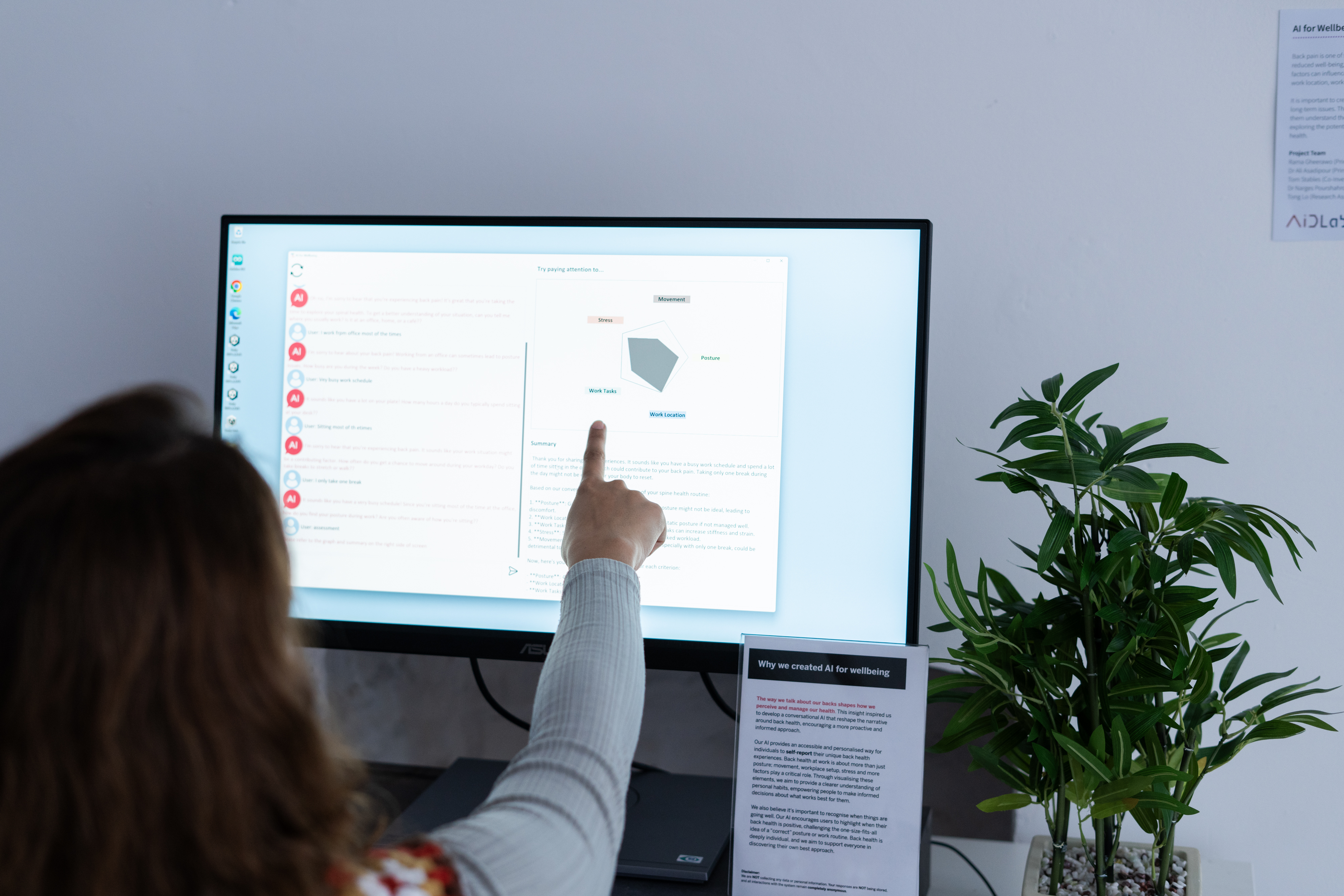Tong Lo
← Home
Conversational AI
2024
-> UI/UX Design
-> LLM
-> Rapid prototyping
Timeline : 2 weeks
Role : Designer
-> UI/UX Design
-> LLM
-> Rapid prototyping
Timeline : 2 weeks
Role : Designer
An interactive agent designed to help employees better understand and manage their back health
Engaging participants in real-time conversations to form a holistic visualisation of their back’s well-being profile in the workplace. The prototype was presented at the London Design Festival to quickly gather insights from the public.

Overview
Initial research (see AI X Design Lab) suggests that there is a link between language and how people perceive their back health. Language has the potential to impact what people think their backs are capable of, the risks of pain and the potential course of action. This insight inspired the creation of a conversational AI, which could provide an accessible and personalised way for individuals to self-report their unique back pain experiences.
![]()

Development
What is it?
(1) The intent
The cause of back pain at work is about more than just posture; movement, workplace setup, stress and more factors play a critical role. By visualising the impact of these factors as contributors to back pain, we aim to empower people to make informed decisions at work. The interactive agent powered by GPT-Mini (4o-mini) is designed to explore the multilayered potential causes of back pain through real-time conversations. The LLM model is fine-tuned based on our research on back health. -> See the research that has inspired this conversational AI
(2) UI Design: Conversation
The interface prioritises clarity and ease of use. On the left side, participants interact with a conventional chat window where they respond to prompts about stress, movement, posture, work tasks and work location. These factors represent micro-actions that can influence an individual’s experience of back pain. (3) UI Design: Visualisation
On the right side, a visualisation highlights potential contributors to back pain based on the conversation. A concise text summary then offers actionable insights and research-backed suggestions on how participants can improve their back health.The interface design aims to give form to the intangible behaviours that have an impact on an individual's health, creating the opportunity for them to make personalised, informed decisions about how to manage their back health in the future.
UI design ︎︎︎


Insight collection
(1) Exhibiton
At the London Design Festival, visitors were invited to interact with our conversational AI, which generated a visualisation of their well-being profiles. The AI asked a series of questions designed to capture insights about their behaviours over the past two weeks. During the event, our primary focus was to gather feedback on the usability of the tool. We asked open-ended questions like: - Is the interfact intuitive to use?
- Did you find the information useful?
- How did the conversations feel?
(2) Feedback: what is lacking?
Participants found the conversation tool useful but indicated two key shortcomings of the tool:
In the case of pain prevention, it is important to go beyond self-reporting and also capture data automatically across work-related factors that affect back health. This insight led us to develop another tool that collects data in a discrete and automatic way. -> See the tool here
Participants found the conversation tool useful but indicated two key shortcomings of the tool:
- Difficult to recalling all experiences over the past two weeks
- Time consuming to input data at work
- Lack of motivation to input data when not in pain
In the case of pain prevention, it is important to go beyond self-reporting and also capture data automatically across work-related factors that affect back health. This insight led us to develop another tool that collects data in a discrete and automatic way. -> See the tool here
Participant information ︎︎︎

Exhibition and engagement︎︎︎


